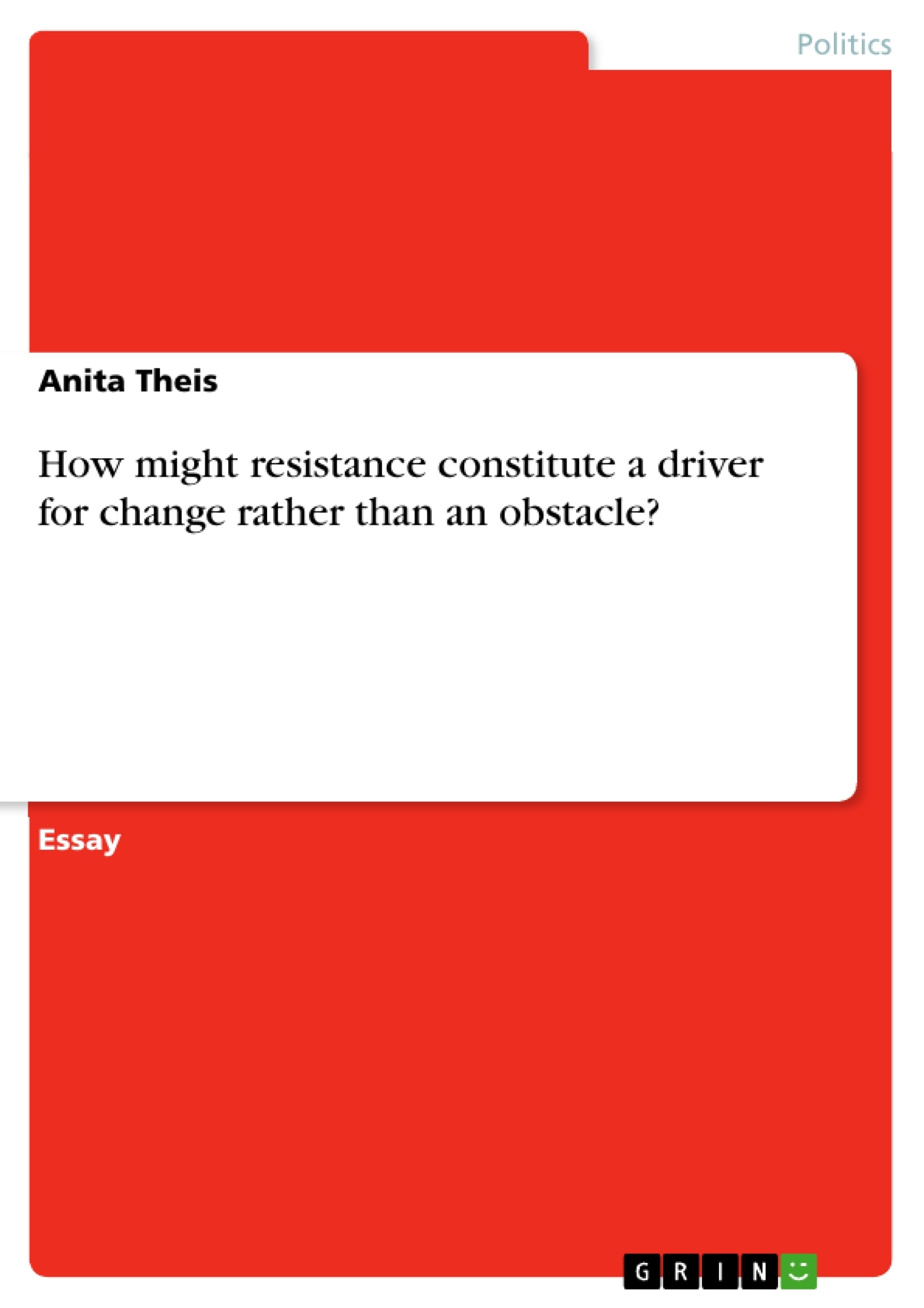Due to an increased rate of change in the environment, companies have to be able to adapt to new circumstances constantly in order to remain competitive. This comes along with organizational changes effecting the organization and its employees to different degrees. However, most people try to sustain the status quo and therefore resist change proposals, which often leads to dysfunctional conflicts within the change process. Top managers who want to introduce changes to their companies should therefore ask themselves how they can use upcoming resistance efficiently as a driver for change. The following paper will investigate this problem from an academic point of view in order to derive to a founded theory of how to use resistance for change instead of against it.
This paper consists of three parts and uses academic articles on topics of change and resistance, to determine main aspects of the theory and their importance for the field. These articles and their main assumptions will be discussed in a structured and critical literature review: An insight into literature about organizational change will be given, as well as its challenges and implications for resistance. As a next step, literature about resistance in organizations will be reviewed with a focus on aspects that work as drivers for resistance, different forms of resistance and how these are expressed. This part closes with a review on the two opposite perspectives of resistance: resistance as an obstacle to change and resistance as a helpful tool for change.
In the second part of the paper the precedent literature review will be used for an analysis answering the main question, deriving to a theory – based on the model of Kotter&Schlesinger - of how to use resistance in a company as a driver for change. The report will be concluded with recommendations for further research.
Table of Contents
INTRODUCTION
LITERATURE REVIEW
CHANGE
RESISTANCE
ANALYSIS
HOW CAN MANAGERS USE RESISTANCE TO IMPLEMENT CHANGE?
Methods of dealing with resistance to change
DISCUSSION
CONCLUSION
REFERENCES
APPENDIX
APPENDIX 1
APPENDIX 2
- Citation du texte
- Anita Theis (Auteur), 2012, How might resistance constitute a driver for change rather than an obstacle?, Munich, GRIN Verlag, https://www.grin.com/document/205963
-

-

-

-
Téléchargez vos propres textes! Gagnez de l'argent et un iPhone X. -

-
Téléchargez vos propres textes! Gagnez de l'argent et un iPhone X. -

-
Téléchargez vos propres textes! Gagnez de l'argent et un iPhone X. -

-
Téléchargez vos propres textes! Gagnez de l'argent et un iPhone X. -

-
Téléchargez vos propres textes! Gagnez de l'argent et un iPhone X. -

-
Téléchargez vos propres textes! Gagnez de l'argent et un iPhone X.

